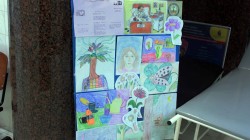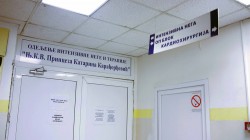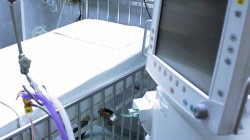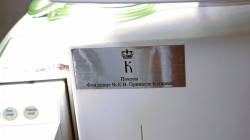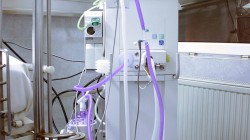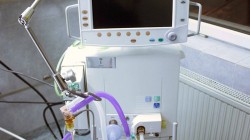
Story by Milica Radovic
There is no sight sadder than that of a sick child. No parent ever wants their child to get sick, and no child wants to spend their childhood in a hospital. Sadly, many children do get sick, and some of them end up spending a lot of time in a hospital. In January of this year, Lifeline Canada and the Princess Katherine Foundation joined forces in helping these children by donating a valuable medical ventilator to the University Children’s Hospital.
Many children in Serbia are familiar with the big white building on Tirsova Street in Belgrade, otherwise known as the University Children’s Hospital. UCH is the oldest pediatric healthcare center in Serbia, as well as a leading educational, scientific research institution. It was founded in 1924, and has since then become one of the best institutions of its kind in the region. As many as 15,000 children are treated there every year, some of them not more than a couple of days, or even hours old.
The building of the UCH has seen better days as it was built in 1940, and renovated 20 years later, miraculously it survived two wars and a series of bombings. Inside, however, the clear glass windows of the Intensive Care Units reveal rows upon rows of modern medical paraphernalia. The juxtaposition of the aged building and the shiny new equipment can be used as a metaphor for all pediatrics in Serbia, thus creating unrivaled ambition and progress in finding ways to work and thrive in less than perfect conditions.
UCH has 4 Intensive Care Units. Above the entrances to them, an inscription reads: “Department of Intensive Care and Therapy H.R.H. Princess Katherine Karadjordjevic”- a testament to the long-lasting cooperation between the Clinic and The Princess Katherine Foundation, as well as Lifeline organizations worldwide. Considering the current financial situation in the country, every donation is of significant support. It is mainly through donations that the UCH gets its push towards reaching the international standards in pediatric medicine. One of such donations was afforded by the fundraising efforts of Lifeline Canada in January of 2015 and provided the hospital a much needed General Electric medical ventilator worth 32,000 Euros.
On behalf of Lifeline Canada, I have had the opportunity to talk to Dr. Sinisa Ducic, assistant director of the University Children’s Hospital, and his colleague, Dr Petar Salevic, a young doctor working in the Clinic’s ICU, who explained the situation in detail. Namely, medical ventilators are one of the most important pieces of equipment used in intensive care – simply put, they are machines that help facilitate breathing in patients who are either unable to breathe or are breathing inadequately. They are used in a variety of cases- pulmonary disorders and respiratory arrest, cardiac dysfunction, disorders of the nervous system, infective diseases, trauma, and also cases when patients have to go into a medically induced coma, etc. In some cases, patients need to be on the ventilators for up to 2-3 months! Ideally, every ICU bed should be equipped with its own ventilator, however, with regards to the UCH this equates to 24 ventilators in 4 separate ICUs. Unfortunately, that is not the case for this hospital. The staff manages by sharing ventilators between ICUs- Seeing as 3 out of 4 units are situated on the same floor, this allows for borrowing and moving the ventilators when needed.
The bare operational minimum is 16 machines, which the Clinic now owns. It goes without saying that is far from the optimal situation, and far, far from the desired one. Not everything is grim, of course. The machine donated by Lifeline Canada was of enormous help. When it comes to saving the lives of the little ones, having an extra ventilator readily available is beyond valuable, especially given the fact that every day at least a couple of patients need to use it. The one donated can be used on newborns as well as older children-meaning the whole span of patients the UCH treats; it has the ability to measure carbon-dioxide concentration (capnography); most importantly, it has more modes of mechanical ventilation than any other device in the Clinic’s possession.
For every child, going to the hospital is a scary, confusing experience, one that the doctors and staff of the UCH work hard every day to make easier. Around 30% of all the doctors there are University professors who have devoted their lives and careers not only to saving children’s lives, but also training future generations of doctors. Their efforts should in no way stay unmentioned.
This donation was a step in the right direction, and a big and significant one. Nevertheless, it is important to remember that it was also just that-a step in a long, arduous journey that lies ahead. It is now up to all of us to keep the journey going, because every step and every donation is a promise of a happier and healthier future for children in Serbia.

